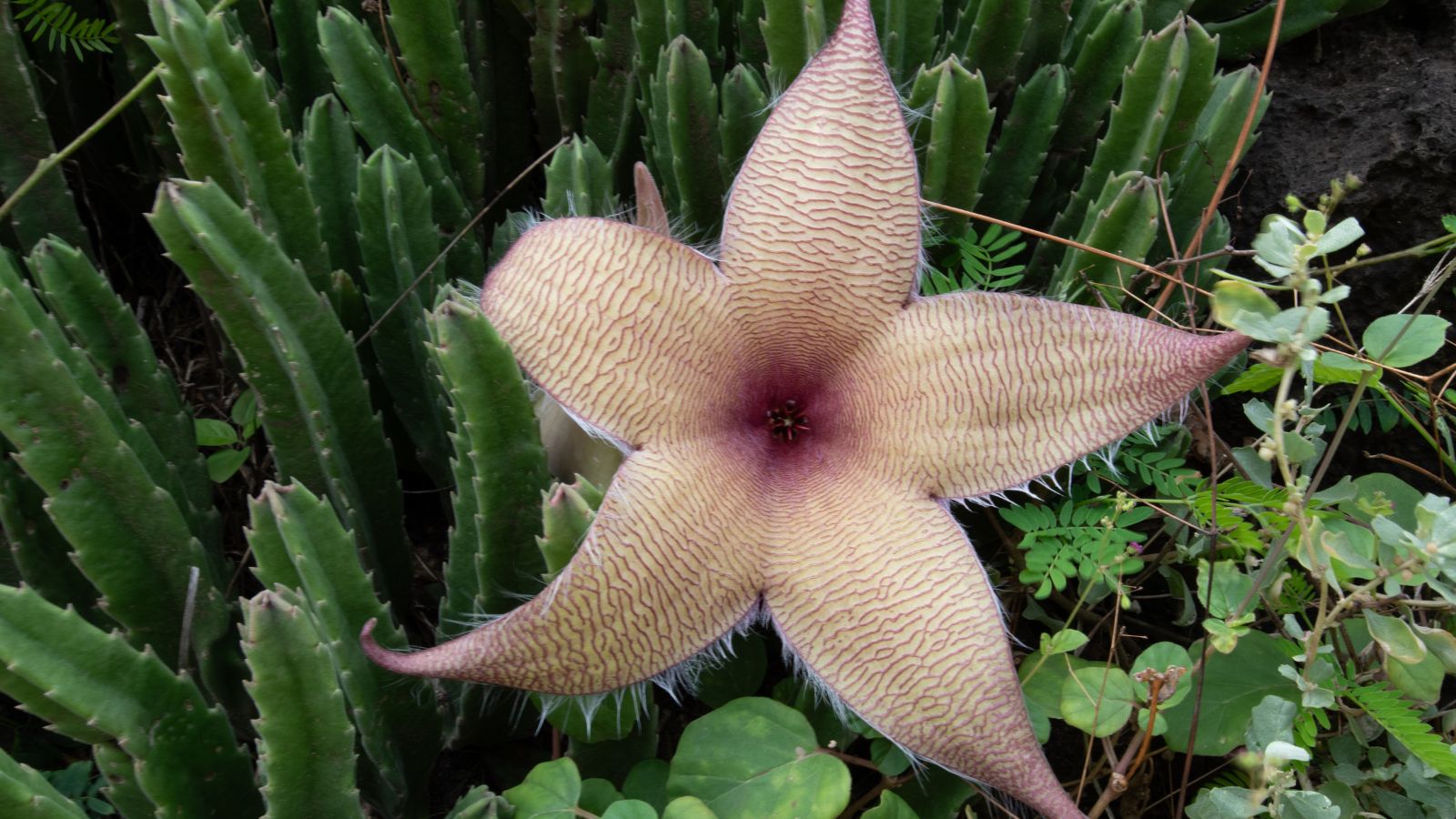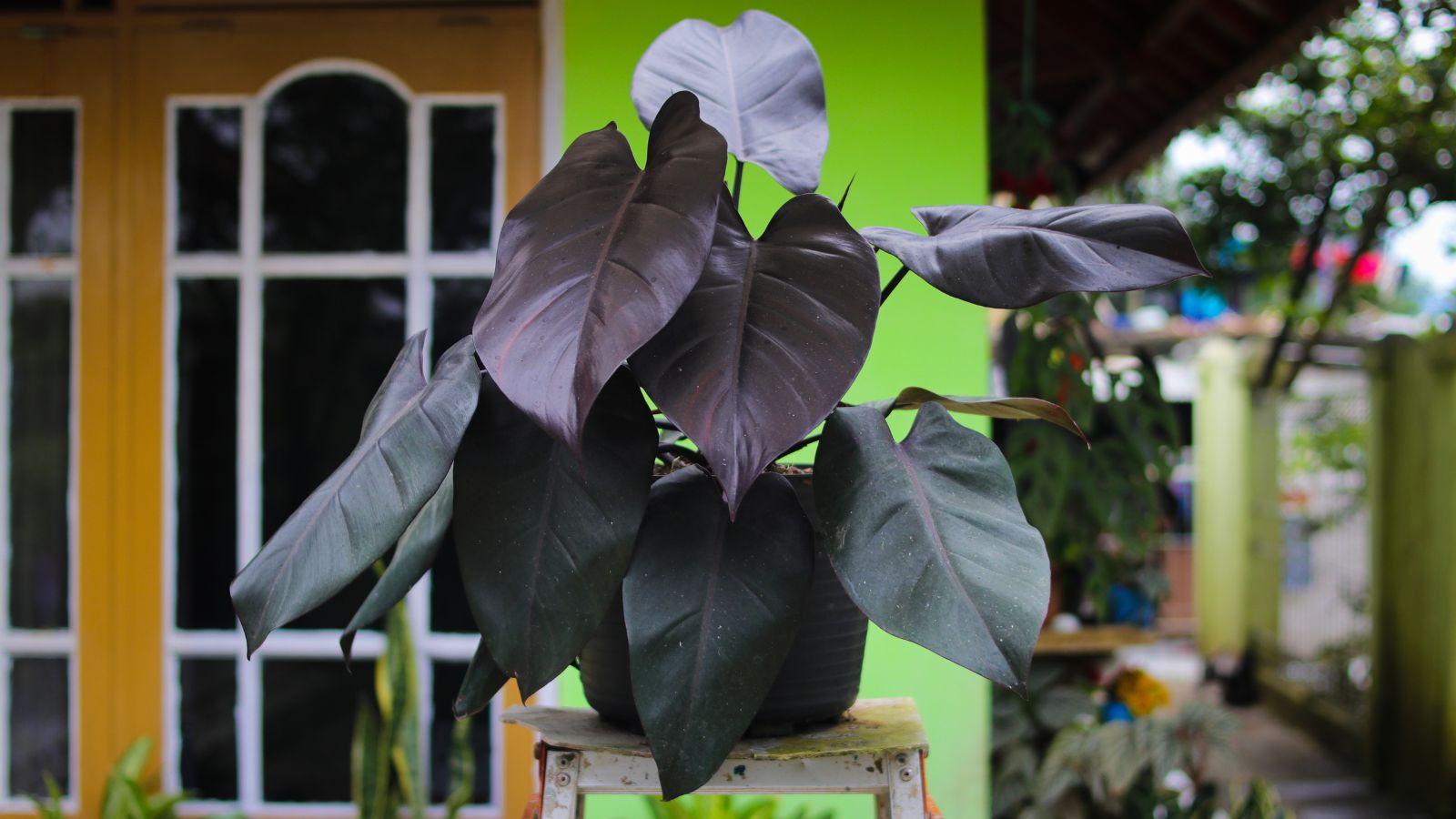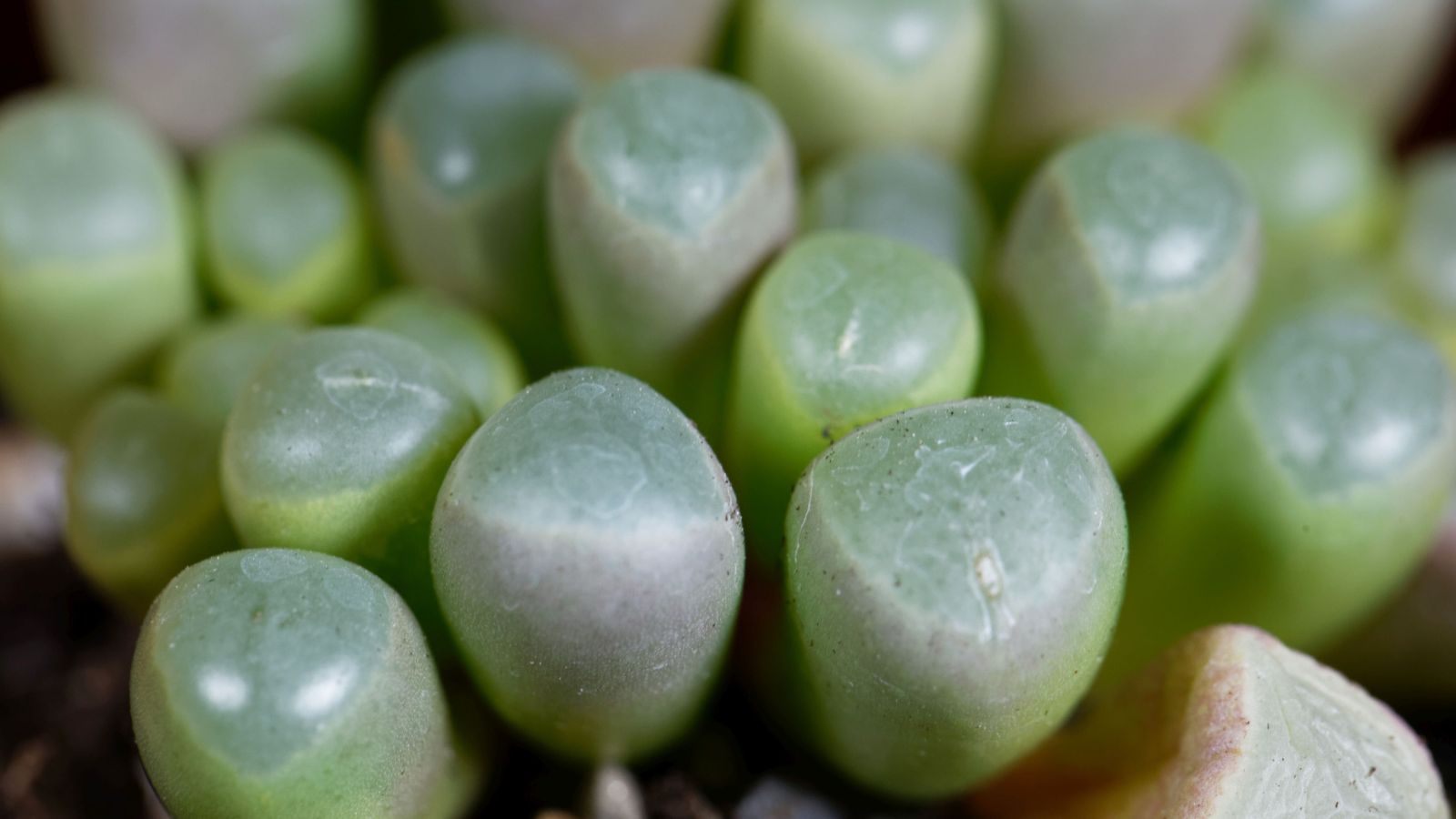Whether or not or not or not you’re planning a Halloween home social gathering, you have to embellish for Halloween yearly, in another case you identical to to maintain the creepy season vibes going all 12 months extended, there are a ton of sinister-looking houseplants accessible available on the market which is able to thrive inside the house.
From the bizarre and strange to the downright creepy, there are tropical vegetation, succulents, cacti, and extra from which you’ll select. Some have black, gothic leaves; some take the form of barely disturbing shapes (like brains), and others even odor like lack of life and decay (however merely quickly!).
In fact, these Halloween picks have completely different care necessities. Some is often a difficulty, much like the handful of carnivorous vegetation on this pointers, however others are loads of basically probably the most easy-going houseplants contained in the commerce, much like the raven ZZ. Every means, we’ll offer you some main care tricks to carry your creepy houseplants thriving all 12 months, so on Halloween, they’ll be prepared for his or her shut up.
Zulu Big


Zulu huge is the widespread title for Stapelia gigantea, a flowering plant that appears to be like like a cactus. It’s largely appreciated for its monumental, creepy-looking flowers. These monumental star-shaped blooms can attain 16 inches in diameter, and so they additionally odor like rubbish and decay, attracting flies for a few days till the odor fades.
Phrase that this African native isn’t contained in the cactus household and is, in truth, a member of Apocynaceae, a household that choices Hoya and even milkweeds. Regardless of its cactus-like look, it doesn’t have spines and is definitely tender to the contact.
That acknowledged, Zulu huge has merely regarding the same care necessities as a cactus. It prefers full daylight and requires well-draining soil to steer clear of rot. Watering Zulu huge is simple, as you in all probability can anticipate it to fluctuate proper right into a bit floppy. Water utterly, and it’ll bounce appropriate as soon as extra.
Begonia Rex


Begonia rex is an easy-going houseplant with really distinctive foliage. There are fairly a couple of cultivars and hybrids obtainable with leaves in shades of inexperienced, silver, purple, crimson, black, and pink. In case you’re adorning for Halloween, the Begonia rex varieties you’re on the hunt for may be these with darkish purple and or black leaves.
‘Black Velvet,’ ‘Black Mamba,’ and ‘Jurassic Dino’ are only a few of your choices. The leaves are usually not solely darkish in shade nevertheless in addition to have odd swirls and textures. They undoubtedly stand out amongst completely completely different houseplants as a bit bizarre and strange.
Like completely completely different Begonia species, these perennials like considerably fastened moisture when saved as houseplants. They won’t reply efficiently if their soil dries out utterly, however they are going to rot in soggy soil. Excessive humidity can also be key to stopping crispy leaves.
Raven™ ZZ


Raven™ ZZ is a cultivar of Zamioculcas zamiifolia, aka the ZZ plant, sometimes often called possibly basically probably the most low-maintenance houseplants accessible available on the market. ZZ vegetation will develop in low gentle circumstances, normally thriving in workplaces and by no means using a single window.
Usually, ZZ vegetation have shiny, inexperienced leaves, however the Raven™ ZZ’s leaves are shiny black. This cultivar provides excessive Edgar Allan Poe vibes, not solely from the black leaves nevertheless in addition to its title. Swap Raven™ ZZ anyplace you want further black in your Halloween decor, and it’ll develop there merely incredible.
Along with its restricted gentle wishes, Raven™ ZZ barely wishes any water. Its bulbous root system shops a ton of moisture. In late fall and winter, you need to water it as rapidly as a month. It may be possibly basically probably the most beginner-friendly creepy Halloween houseplant.
Echeveria ‘Black Prince’


Echeveria ‘Black Prince’ is a shocking rosette-shaped succulent with darkish crimson leaves which can be practically black. The leaves are inexperienced in path of the middle of the rosette, transitioning to crimson after which black in path of the edges.
In poor lighting, ‘Black Prince’ leans further inexperienced, however in a location with full picture voltaic publicity, it’ll be a gradual shade of black. It’s the right Halloween succulent you possibly have a south-facing window, skylight, or massive sunny spot. You may additionally obtain full black leaves with a robust develop gentle.
It’s essential plant these succulents in well-draining soil in a pot with a drainage gap, ideally one fabricated from terracotta or clay. Wait till the soil is totally dry earlier than watering these vegetation. While you do, water till further pours out of the drainage gap.
Pitcher Plant


Pitcher vegetation of the Nepenthes genus aren’t possibly basically probably the most beginner-friendly houseplants, however everytime you’re as rather a lot as a result of the duty, there’s nothing further wonderful for a creepy Halloween ornament. The pitchers on these carnivorous vegetation really eat bugs, and what might very successfully be spookier than that? (To not stage out helpful, you possibly have a fungus gnat draw again.)
Usually, these pitcher vegetation could also be potted in sphagnum moss, although normally nurseries plant them in soil. They like their potting medium to be persistently moist however under no circumstances moist. The roots ought to breathe. Moisten the sphagnum earlier than it dries out, or use a moisture meter to guage the soil and water merely earlier than it goes from “moist” to “dry.”
Use distilled water. It’s necessary that you just merely under no circumstances water pitcher vegetation with faucet water and under no circumstances fertilize them. They get their dietary nutritional vitamins from the carnivorous pitchers, so everytime you current any (together with hint parts in faucet water), they may cease producing the pitchers completely.
Ideas Cactus


It’s not exhausting to seek out out why the ideas cactus is on this pointers. It appears to be like like a ideas, making it the right houseplant to place with skull-related Halloween decor.
Nonetheless, everytime you’re organising a traditional “eyeballs nevertheless it’s actually grapes” or “intestines nevertheless it’s actually spaghetti” station, observe Jell-o for the brains, on account of the ideas cactus is lined in tiny spines. Keep it away from kids and permit them to soundly get pleasure from its spooky enchantment from afar.
Like most species contained in the Mammillaria genus, the ideas cactus wishes quite a lot of gentle to develop precisely and purchase the right brain-like form. A south-facing window and/or supplemental develop lights could also be your most attention-grabbing guess when rising it indoors.
Strive shifting this cactus exterior in spring and summer season season to provide optimum lighting, after which when it’s time to ship it indoors for Halloween, it ought to be in good form.
Venus Fly Entice


One completely different carnivorous species like pitcher vegetation, the Venus fly entice makes a superb creepy Halloween houseplant. If truth be told, there are further fake Venus fly traps in Halloween decor than ever earlier than, suppose “Little Retailer of Horrors,” so why not get the true situation?
Like Nepenthes, Venus fly traps get their dietary nutritional vitamins from tiny bugs that get caught contained in the traps, and so they don’t like supplemental fertilizer. Don’t plant them in soil with fertilizer, don’t water them with faucet water (use distilled instead), and undoubtedly skip them while you’re fertilizing the remainder of your vegetation.
In addition to they like to sit down in moist soil that under no circumstances dries out. It would make them a bit further high-maintenance than loads of the cacti on this or the raven ZZ, however caring for Venus fly traps is successfully positively definitely worth the trouble.
Geogenanthus


Geogenanthus ciliatus, normally merely referred to informally as geogenanthus or “geo,” earns a spot on this pointers with its attractive, dark-purple-to-nearly-black leaves. This foliage is shiny, thick, and virtually leathery, standing out in a sea of inexperienced choices. It’s the mannequin new “goth plant” on the houseplant scene.
Whereas the leaves themselves are enormous (as rather a lot as eight inches extended), the plant itself doesn’t get very tall, reaching about ten inches excessive at maturity. Plant it in well-draining soil and place it in a spot the place it’s going to get shiny, oblique daylight or refined window gentle.
Keep the soil in your geogenanthus’s pot moist, on account of it doesn’t select to dry out and will droop dramatically. A ceramic or plastic pot could also be supreme to retain additional moisture. Ensure to not overwater and frequently enable water to empty out of the drainage gap.
Residing Stones


Lithops refers to a genus of 37 species of small, spherical succulents that appear to be rocks. Significantly, it may be simple to miss them as rocks throughout the event that they weren’t situated in a plant nursery. These weird dwelling stones cut back up down the middle, from which new enchancment emerges.
Whereas not precisely scary, they’re undoubtedly bizarre attempting. Some collectors uncover their form and their strategy of enchancment to be off-putting and unusual.
Like many succulents, dwelling stones want full picture voltaic and need little or no water to get by. Residing stones would look good subsequent to a ideas cactus in a sunny window, however preserve Lithops vegetation of their very private pot.
If truth be told, Lithops species want water solely at sure occasions of their enchancment cycle. The one occasions you need to water them are in late spring/early summer season season and late summer season season/fall. They need to be in totally dry soil by the use of peak summer season season and all by the use of winter.
Philodendron ‘Royal Queen’


With dramatic darkish purple leaves that seem practically pitch black and a attainable mature peak of 4 ft, Philodendron ‘Royal Queen’ is match for an precise creepy Halloween houseplant current. Thankfully, it’s massive simple to maintain, like most Philodendron species, so long as you possibly can have the house for it.
‘Royal Queen’ will thrive in shiny, oblique daylight or in a spot that will get a couple of hours of direct gentle from a window (merely steer clear of noon picture voltaic), and it doesn’t want mounted moisture. Look forward to the soil to dry out, then water utterly.
The trick to rising these vegetation good is to encourage them to climb. Merely tying them to a pole or trellis isn’t sufficient to make sure that you enormous, lovely leaves. Create a moss pole that’s really filled with sphagnum moss for the aerial roots of ‘Royal Queen’ to really flip into, and this Philodendron will produce monumental, incredible darkish leaves. Don’t neglect to water the moss and preserve it moist for the complete affect.
Sundews


One completely different carnivorous plant probability, sundews are considerably lesser acknowledged carnivorous vegetation for mannequin new houseplant collectors. These small, sticky vegetation have tendrils that unfurl like octopus tentacles, lined in dewy, hair-like constructions that enchantment to and digest bugs.
Given the tentacle look, sundews would really add a Lovecraftian really actually really feel to your Halloween decor. Sundews are typically shiny shades of inexperienced, yellow, or pink, with crimson dew. They’re undoubtedly creepy-looking, and that’s earlier than you study that the “dew” in “sundew” is filled with digestive enzymes.
Species all by the Drosera genus differ, however most will do most attention-grabbing in a sunny window. They like persistently moist soil, identical to pitcher vegetation and Venus fly traps. It’s furthermore important that you just merely steer clear of watering sundews with faucet water, which has dietary nutritional vitamins these vegetation haven’t superior to easily accept. Use distilled water instead.
Emerald Ripple Peperomia


Emerald ripple peperomia isn’t precisely possibly basically probably the most horrifying plant on this pointers, although its darkish inexperienced or emerald leaves totally reward Halloween shade schemes. The foliage furthermore has a bumpy, atypical texture.
There’s a reasonably extended pointers of cultivars of emerald ripple peperomia obtainable—together with the red-leaved ‘Crimson Luna’ and ‘Abricos,’ which has leaves with an orange barrier—which might actually pop subsequent to a raven ZZ or geo plant.
Peperomia vegetation don’t want an excessive amount of sunshine, so that they’ll do exactly incredible contained in the shiny, oblique gentle. Like a typical houseplant, you need to wait till their soil dries out utterly after which give them a superb drink.
Earlier Man Cactus


Earlier man cactus is an precise cactus with standard cactus care necessities: fairly a couple of gentle, well-draining soil, and minimal water. What makes it stand out is what seems to be furry, white hair defending it, paying homage to an outdated man who wishes to go to the barbershop.
These cacti are form of creepy and paying homage to Cousin Itt. They’re uncommon amongst so many different cacti which can be comparable. This season, an outdated man cactus would look wonderful close to your ideas cactus, dwelling stones, or dark-leaved rosette succulents.
Plant outdated man cactus vegetation in terracotta pots with drainage and under no circumstances allow them to sit down down in water.
Alocasia ‘Black Velvet’


Alocasia ‘Black Velvet’ is an exact stunner. It’s the appropriate completely different for the houseplant lover who’s attempting not only for an accent this Halloween, nevertheless in addition to a plant that offers off a goth aura all 12 months extended. ‘Black Velvet’ has monumental, velvety leaves which can be darkish inexperienced (practically black), with distinguished veins and crimson undersides.
This plant could also be considerably finicky, nevertheless it’s successfully positively definitely worth the gamble. Keep its soil moist however not moist, and don’t let it dry out 100%. ‘Black Velvet’ won’t tolerate drought nevertheless in addition to will perish in soggy soil, so use a moisture meter to remain on observe.
Aeonium ‘Zwarktop’


Very like Echeveria ‘Black Prince,’ Aeonium ‘Zwarktop’ is a black-leaved cultivar of a preferred rosette-shaped succulent. Aeonium vegetation look much like Echeveria however have thinner leaves. They develop pretty shortly and type stems over time.
‘Zwarktop’ has mega-dark purple leaves that seem black, with some inexperienced on the middle of the rosette. These succulents can tolerate partial shade, whereas the same can’t actually be acknowledged for Echeveria. In case you lack the fitting indoor lighting, ‘Zwarktop’ is the spooky succulent for you.
Watch out to not overwater ‘Zwarktop,’ which has a typical succulent intolerance for moist soil.
Burgundy Rubber Tree


Burgundy rubber bushes are the best Halloween houseplant probability if what you’re actually searching for is further of a tree. You typically uncover these vegetation after they’re nonetheless solely a few ft tall in nurseries, however they can attain 40 ft in peak in supreme circumstances.
Okay, so in all probability you don’t have that form of peak in your house, however burgundy rubber bushes—with their darkish, broody leaves—would possibly solely develop a foot or two yearly indoors. Plus, the larger it’s going to get, the extra monstrous it seems.
In case your tree begins to the contact the ceiling, you in all probability can change it exterior (cold-hardy in zones 10-12) or give it the outdated chop and prop, sharing cuttings with buddies.
Scindapsus treubii ‘Darkish Sort’


Scindapsus treubii ‘Darkish Sort’ is one different choice that makes the rules attributable to its darkish inexperienced, almost-black leaves, as indicated by its cultivar title. ‘Darkish Sort’ is an easy-going climbing or trailing plant, much like Scindapsus pictus, moreover often called silver pothos, an outstanding frequent houseplant.
‘Darkish Sort’ is a little more strong to hunt out than in widespread Scindapsus cousins, however you in all probability can merely get starter vegetation and cuttings on-line and from specialty nurseries. With low gentle necessities and a normally chill nature, ‘Darkish Sort’ matches wherever your Halloween decorations look most attention-grabbing.
Teenager Toes


Chalk this one as rather a lot as a result of the rules of Halloween houseplants which can be merely downright bizarre attempting. Teenager toes succulents appear to be a child’s toes, with small see-through home house home windows on the foundations. Some would possibly ponder these vegetation a trypophobia set off, and most agree they’re merely plain odd.
Teenager toes succulents are very simple to cope with, so long as you in all probability can give them actually sturdy gentle. They’d develop most attention-grabbing in a south-facing window or with the assistance of develop lights. Like the opposite succulents and cacti on this pointers, plant your bizarre little teen toes in well-draining soil and solely water as rapidly as a result of it’s gone utterly dry.
In case you’re fortunate, your teen toes would possibly even bloom spherical this time of 12 months. Yellow flowers normally emerge in fall.
Black Bat Flower


Nothing says Halloween bigger than bats, other than in all probability black cats. Tacca chantrieri is a flowering plant contained in the yam household that offers each.
Its lovely purple-black flowers appear to be a mixture of a bat and a whiskered black cat. It’s normally commonly known as the black cat flower and even satan flower. So far as vegetation go, it doesn’t get somewhat rather a lot spookier than that.
These tropical vegetation want shiny, oblique gentle, well-draining potting combine, and terracotta pots that promote good air circulation.
